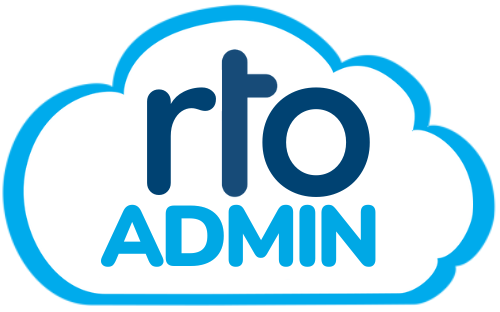Have you ever wondered what it takes to successfully establish a Registered Training Organization (RTO) and cater to the needs of your target audience? Setting up an RTO involves more than just following a set of guidelines; it requires thorough market research to ensure your services align with what potential students and industries are currently seeking. Understanding your target market plays a critical role in planning your RTO’s business strategy, identifying your competitors, and ultimately ensuring that your institution becomes a reputable provider of education and training.
The Importance of Market Research in RTO Setup
Understanding the significance of market research is the first step in the journey of setting up your RTO. Conducting market research allows you to gather and analyze data about your target market. It primarily involves, but is not limited to, studying your target audience’s demographics, their needs from a training provider, and the industry demands that shape their decision-making processes. This in-depth understanding helps you tailor your courses, ensuring they are both relevant and attractive to prospective students.
Moreover, market research helps you understand who your competitors are and what they offer. Analyzing their strengths and weaknesses provides insights into gaps in the market and opportunities your RTO can capitalize on. This proactive approach allows you to stand out in a competitive educational landscape.
Identifying Your Audience and Their Needs
Pinpointing who your audience is forms the foundation of your RTO’s success. This involves identifying the demographics of your potential students — their age, educational background, professional experience, and geographic location. But demographics are just one piece of the puzzle. You also need to grasp the needs, preferences, and motivations of your audience. Understanding what they seek from a training provider enables you to create programs that appeal directly to their aspirations and expectations.
For example, are your potential students looking to upskill in ICT (Information and Communication Technology) or switch to a new career in healthcare? Knowing their professional ambitions and current skill gaps will guide you in developing a curriculum that stands out.
Evaluating Industry Demands
Industry demands are in constant flux, influenced by technological advancements and evolving market needs. Conducting thorough research into fields such as healthcare, ICT, and other growth sectors can inform your decision on which courses your RTO should offer. This ensures that your training programs remain relevant and that graduates’ qualifications are recognizable and valued by employers.
Utilize resources such as job outlook reports, industry publications, and government websites to keep abreast of current and future trends. Understanding these dynamics helps you prepare courses that not only match but anticipate market demands, thereby equipping your students with the skills they need to succeed.
Crafting Your Business Strategy
With a clear understanding of your market and audience, the next step is to develop a comprehensive business strategy. This involves not only deciding which courses to offer but also how to operationally structure your RTO.
Setting Objectives and Goals
Set clear and achievable objectives for your RTO based on your market research findings. These goals will guide the development of your business strategy and help measure your organization’s progress. Whether your aim is to become a premier provider in a specific industry sector, expand geographically, or diversify your course offerings, having clear objectives is essential.
Developing a Competitive Advantage
Use the insights gained from understanding your competitors to develop a unique competitive advantage. This could be the introduction of a new training method, offering certifications that are in high demand, or providing superior student support services. Your competitive edge should resonate with the needs and preferences of your target audience, differentiating your RTO from others in the market.
Marketing and Promotion
An essential part of your business strategy is how you plan to market and promote your RTO. Create a marketing plan that aligns with your research findings and reaches your target audience effectively. Whether through social media campaigns, partnerships with industry bodies, or attending training expos, your promotional efforts should highlight your RTO’s strengths and offerings.
Navigating Compliance and Registration
Ensuring compliance with regulatory standards and obtaining the necessary registrations is a non-negotiable part of setting up an RTO. These requirements can vary significantly depending on your location and the specific sectors you plan to operate within.
Understanding Compliance Mechanisms
Becoming familiar with your region’s compliance and regulatory requirements is paramount. Each country or state may have a different governing body responsible for RTO oversight, such as ASQA in Australia for national training organizations. Understanding these requirements will protect your RTO from any legal issues and ensure that your programs are accredited and respected.
Using an RTO Checklist for Success
An RTO checklist can serve as a valuable tool to help you manage and fulfill compliance requirements. This checklist should cover all critical aspects of RTO operations, including curriculum standards, teacher qualifications, and administrative processes. A well-structured checklist keeps your setup on track and ensures nothing is overlooked.
Seeking Expert Guidance
Consulting with experienced RTO consultants, like Merinda Smith, can provide valuable insights and assistance. These experts can offer guidance on compliance matters, help you prepare for audits, and share strategies to optimize your operations. Their expertise can be crucial in navigating the complexities of compliance and achieving successful registration.
Dynamic Market Dynamics and the Need for Adaptation
The world of education is not static; it evolves continuously with new regulations and shifts in market demands. Staying proactive and adaptable is essential when running an RTO.
The Impact of Delaying Your Start
Every moment you delay starting your RTO can equate to missed opportunities, especially in a rapidly changing environment. Delaying your entry into the market can result in failing to meet emerging needs and falling behind competitors who are quicker to adapt. Therefore, taking swift action, once you understand your market and compliance requirements, is crucial.
Evolving Regulations and Standards
Legislation and standards impacting RTOs are subject to change, sometimes swiftly and unexpectedly. Maintaining an agile organizational structure allows you to quickly adapt to new regulations and maintain compliance. Regularly reviewing policies, consulting with regulatory bodies, and participating in industry forums can help you stay informed and prepared.
The Path to Successful RTO Operation
Starting and running a successful RTO requires determination, thorough planning, and a commitment to understanding and meeting the needs of your target market. While this process can be complex and demanding, the rewards of providing meaningful education and contributing to workforce development make it worthwhile.
Engaging with Stakeholders
Involving stakeholders such as industry partners, potential employers, and past students can provide valuable feedback on your offerings. Engaging with these groups during different phases of your RTO setup can ensure your courses meet industry expectations and remain relevant.
Continuous Improvement
An RTO should not only strive for initial success but also for continuous improvement. Regularly gather feedback from students and industry partners to help refine and improve your programs. Analyzing data from student outcomes and industry demand trends will support ongoing development, ensuring your RTO remains a leader in training excellence.
By committing to a practice of continuous research, strategic planning, and adaptive operations, your RTO can thrive in a competitive educational landscape. Understanding your target market deeply and aligning your objectives with their needs builds a foundation of trust and effectiveness that will set your institution apart.



